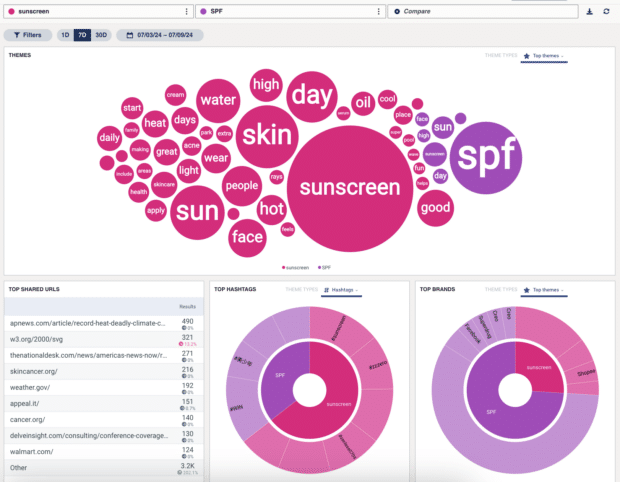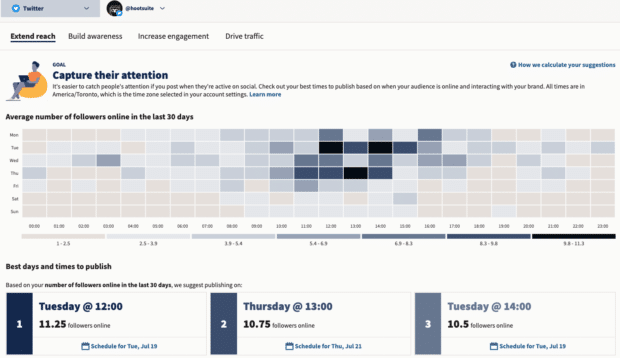
Find out what it takes to create a winning X (Twitter) marketing strategy and reach a valuable audience on one of the world’s most engaging platforms.
Christina Newberry August 8, 2024 10 min read
Marketing on Twitter (now officially known as X) remains an important strategy for many brands, despite some of the big players leaving the platform in 2023.
Twitter is one of the few social platforms with an audience that skews male, and the largest age group is between 25 and 35 years old. If your target audience aligns with these characteristics, X (Twitter) marketing should definitely be part of your social marketing plan.
But even if your audience doesn’t align with the top Twitter demographics, you can still find valuable pockets of engagement on the platform.
In this post, we’ll share insights from seven social marketing pros as well as a comprehensive set of up-to-the-minute Twitter marketing benchmarks to help you create an effective strategy of your own.
Bonus: Download the free 30-day plan to grow your Twitter following fast, a daily workbook that will help you establish a Twitter marketing routine and track your growth, so you can show your boss real results after one month.
X (Twitter) marketing is the practice of using the social network X to promote a brand using organic social content.
X is a fully public, text-oriented platform that places high value on engagement and interaction. A successful Twitter presence therefore must look a little different from strategies for marketing on other social platforms.
Using Twitter for affiliate marketing involves driving traffic to affiliate links (often using UTM parameters) through Twitter. Twitter is the fourth-most popular social network for affiliate marketing, after Facebook, Instagram, and Pinterest.
Twitter influencer marketing involves partnering with content creators to promote your products or services to their Twitter audience. Twitter is also the fourth-most popular platform for influencer marketing, this time behind TikTok, Instagram, and Facebook.
Twitter use for influencer marketing campaigns has dropped significantly in the last two years, from 23% of influencer marketing brands using the platform in 2022 to just 9.9% in 2024. Is that a trend you should follow? Or is there opportunity here to step into a marketplace that now has less competition? You’ll have to do some testing to find out.

Create. Schedule. Publish. Engage. Measure. Win.
It’s easy to post a link in a Tweet. There’s no need for link-in-bio workarounds. However, that does not necessarily mean that posting links is a good idea. Instead, develop a content strategy that is self-contained within the X platform and inspires retweets.
“The secret ingredient of a successful brand presence on X (Twitter), in my opinion, is to create content that keeps people on the network,” says Nick Martin, social media marketing manager at Tipalti.
“The majority of Twitter users don’t want their scroll interrupted and will quickly move past a CTA to ‘learn more in this blog post,’” Martin adds. “Create content that lives within the trending formats of Twitter. Repurpose blog posts into videos, GIFs, threads, or images.”

As we said up top, engagement is the name of the game on X. Engagement is important on all social platforms, but it’s particularly visible on X, and it’s an expected part of the culture.
“The more you invest in having meaningful conversations with your audience on X, the more they’ll feel like they are part of your brand and part of a larger community,” says Chelsea Evans-Flower, owner of Scott Social.

“Delve into social listening and understand who your audience is,” says Mariya Spektor, director of content for SocialChain. “Mimic how they speak (don’t be afraid to use their slang), find community tags they resonate with, and identify individuals or other brands they engage with. Use keywords related to topics of interest and show up in these communities with your audience.”

Combining detailed analytics monitoring with an in-depth social listening program allows you to fill your content calendar with bold bets. You know what to expect from your audience, and you have the tools to understand their reactions in real time. This gives the freedom to experiment in ways that build true brand loyalty.
“There have been so many times where the posts we almost didn’t hit publish on were the ones that popped off and drove brand love,” says Gabe Gomez, social strategy lead at Verizon. “Have the courage to try new formats or a new tone—you might be surprised at the results.”

It’s always helpful to know how your marketing on Twitter stacks up against the competition. We’ve pulled these Twitter marketing benchmarks for every industry from the industry benchmarking tool built into the Hootsuite dashboard.
You’ll notice the benchmarks vary significantly by industry, so make sure you’re comparing yourself to the right field. For instance, other industries will never match the click-throughs of an entertainment and media account, the audience growth rate of a technology account, or the engagement rate of a nonprofit. That’s okay! Aim to align with your own industry, not Twitter’s top accounts.
Threads was introduced as Meta’s answer to Twitter. So do the same marketing best practices apply?
The jury is still out, but some brands are seeing early success on Threads. The key seems to be a follower-focused approach to engagement. People expect a response on Threads and they will only stick around if they get it.
If you want to connect with your audience on social, you have to know who they are. These X (Twitter) demographics can help.

New to X (Twitter) ads? This complete guide covers all the specs you need to know for 2024, plus how to start your first campaign.

Get familiar with all the most important and up-to-date X (f.k.a. Twitter) statistics, so you can plan a strategy that works for your brand.

Discover how to create a Twitter bio that makes an incredible first impression with examples from some of the absolute best on the platform.